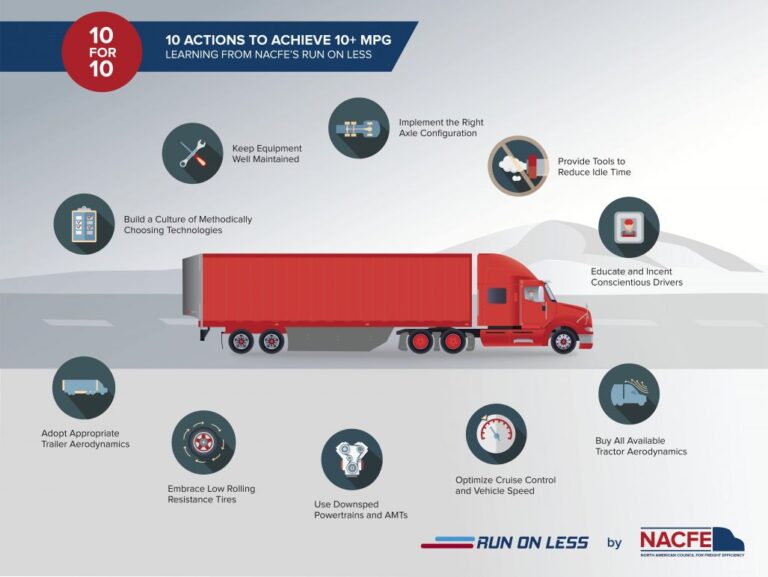
To operate a semi truck, familiarize yourself with the controls and gauges, perform a pre-trip inspection, carefully maneuver the vehicle, and adhere to traffic rules and regulations. Proper training and licensing are essential.
Operating a semi-truck requires knowledge of the vehicle controls, a thorough pre-trip inspection routine, safe and skillful maneuvering, and strict compliance with traffic laws. Whether you are a new driver or need a refresher, mastering these steps is crucial for a successful and safe journey.
This comprehensive guide will provide you with the essential information and tips to operate a semi-truck efficiently and confidently, ensuring smooth and secure transportation of goods. Let’s delve into the key aspects and best practices for operating a semi-truck with ease and expertise.

Credit: spectrum.ieee.org
Navigate As You Want:
Preparing To Operate A Semi Truck
In order to operate a semi truck, it is important to prepare yourself and the vehicle before hitting the road. This involves performing a thorough pre-trip inspection to ensure the truck is in proper working condition. Check the tires, brakes, lights, and fluids to identify any potential issues that need to be addressed before starting your journey. Once you have completed the inspection, adjust the seat and mirrors to ensure proper visibility and comfort while driving. Familiarize yourself with the various controls inside the truck, such as the steering wheel, pedals, and gear shifter. Understand how to use the turn signals, headlights, and windshield wipers for safe operation. By taking the time to prepare and familiarize yourself with the truck, you can ensure a smooth and safe driving experience.
Starting And Moving The Semi Truck
Entering the Truck and Adjusting Safety Belts: Before starting the semi truck, make sure to properly enter the cabin and adjust the safety belt for a secure fit.
Starting the Engine: Insert the key into the ignition, turn it to start, and wait for the engine to come to life.
Engaging Transmission and Releasing Parking Brake: With the engine running, engage the transmission into first gear and release the parking brake to start moving.
Accelerating and Shifting Gears: Gradually press the accelerator, and as the truck gains momentum, shift through the gears as needed to reach the desired speed.
Driving The Semi Truck
Driving the Semi Truck: Operating a semi truck requires maintaining safe speed and following traffic laws, including using turn signals and checking mirrors, maintaining a safe following distance, and navigating turns and changing lanes.

Credit: www.wikihow.com
Operating In Various Conditions
Operating a semi truck requires special skills and knowledge, especially when it comes to driving in various conditions. One important aspect is maneuvering in inclement weather, such as rain, snow, or fog. It is crucial to adapt your driving to these conditions by reducing speed, increasing following distance, and using appropriate signals. Maintaining constant vigilance is key to ensure safety on the road. Similarly, driving in mountainous areas requires extra caution due to steep inclines, sharp curves, and potential brake overheating. Downshifting correctly and using engine brakes can help control speed and prevent accidents. Additionally, driving at night poses its own set of challenges, such as reduced visibility and drowsiness. Taking regular breaks, using high beams judiciously, and maintaining a safe distance from other vehicles are important precautions to ensure a safe journey. By mastering these skills, you can become a competent truck driver, capable of operating a semi truck in various conditions with confidence.
Performing Post-trip Duties
In order to properly operate a semi truck, it’s crucial to perform post-trip duties. This includes securing and parking the truck, conducting a thorough post-trip inspection, and completing any required documentation.
Securing and parking the truck involves making sure it is parked in a safe and secure location, using the parking brake, and securing any loose or hazardous materials. It’s important to choose a suitable parking spot that allows for easy maneuverability and doesn’t obstruct other vehicles.
After parking, conducting a post-trip inspection is essential. This involves checking the tires, brakes, lights, and other components of the truck for any signs of damage or wear. Any issues should be promptly reported and resolved to ensure safe operation.
Finally, completing the required documentation is necessary for legal and regulatory purposes. This includes logging mileage, fuel usage, and any maintenance or repairs performed. Accurate and detailed documentation can help with compliance and support efficient fleet management.

Credit: www.wikihow.com
Frequently Asked Questions For How To Operate A Semi Truck
What Are The Basic Steps To Operate A Semi Truck?
To operate a semi truck, you need to go through these steps: check your mirrors, start the engine, adjust your seat and mirrors, release the parking brake, put the truck in gear, accelerate and decelerate smoothly, use your turn signals, and always obey traffic laws.
How Do You Steer A Semi Truck?
To steer a semi truck, use both hands on the steering wheel, keep your hands at the 9 o’clock and 3 o’clock positions, use smooth movements when turning, make wider turns to accommodate the length of the truck, and be aware of the truck’s blind spots.
What Are The Main Challenges Of Operating A Semi Truck?
Operating a semi truck can be challenging due to its size and weight. Some main challenges include navigating tight spaces, dealing with adverse weather conditions, managing fatigue on long drives, sharing the road with other vehicles, and maintaining a constant awareness of your surroundings.
What Safety Precautions Should You Take When Operating A Semi Truck?
When operating a semi truck, you should always wear your seatbelt, maintain a safe following distance, use your turn signals, check your blind spots, avoid distracted driving, obey speed limits, conduct regular vehicle inspections, and ensure proper load securement.
Conclusion
Mastering the operation of a semi truck is essential for any truck driver. By following these steps and practicing regularly, you can become proficient in operating a semi truck safely and efficiently. Remember to stay focused, anticipate potential hazards, and adhere to all traffic laws and regulations.
With proper training and experience, you’ll be equipped to handle the challenges and responsibilities that come with operating a semi truck. Happy trucking!




